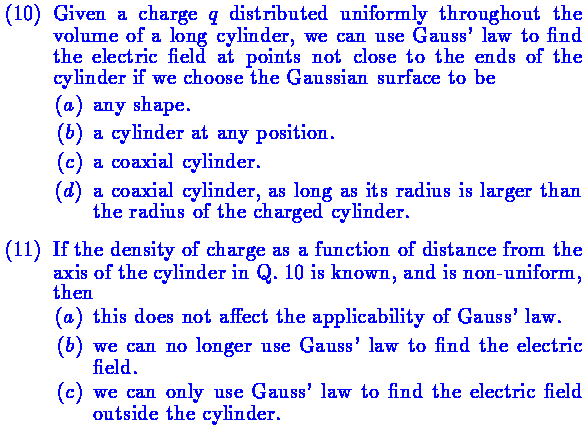


(10) -- ONLY (c) IS CORRECT
(11) -- ONLY (a) IS CORRECT
This problem has symmetry about the axis of the cylinder. In other
words, if the axis of the cylinder is vertical, then the field at a
distance r from this axis must be the same, whether we are
north, south, east or west from the cylinder (or any direction in
between). There is nothing in the problem that could conceivably
cause any one of those directions to be distinguishable from any other.
By choosing a coaxial cylinder as our Gaussian surface, we ensure
that the E field at every point on the curved surface of our cylinder
is the same.
If we have non-uniformities in the radial direction, this has no effect on the cylindrical symmetry, and so Gauss' law is still useful for finding E.
